Affiliate links on Android Authority may earn us a commission. Learn more.
ZTE Axon 7 vs Samsung Galaxy S7
November 7, 2016
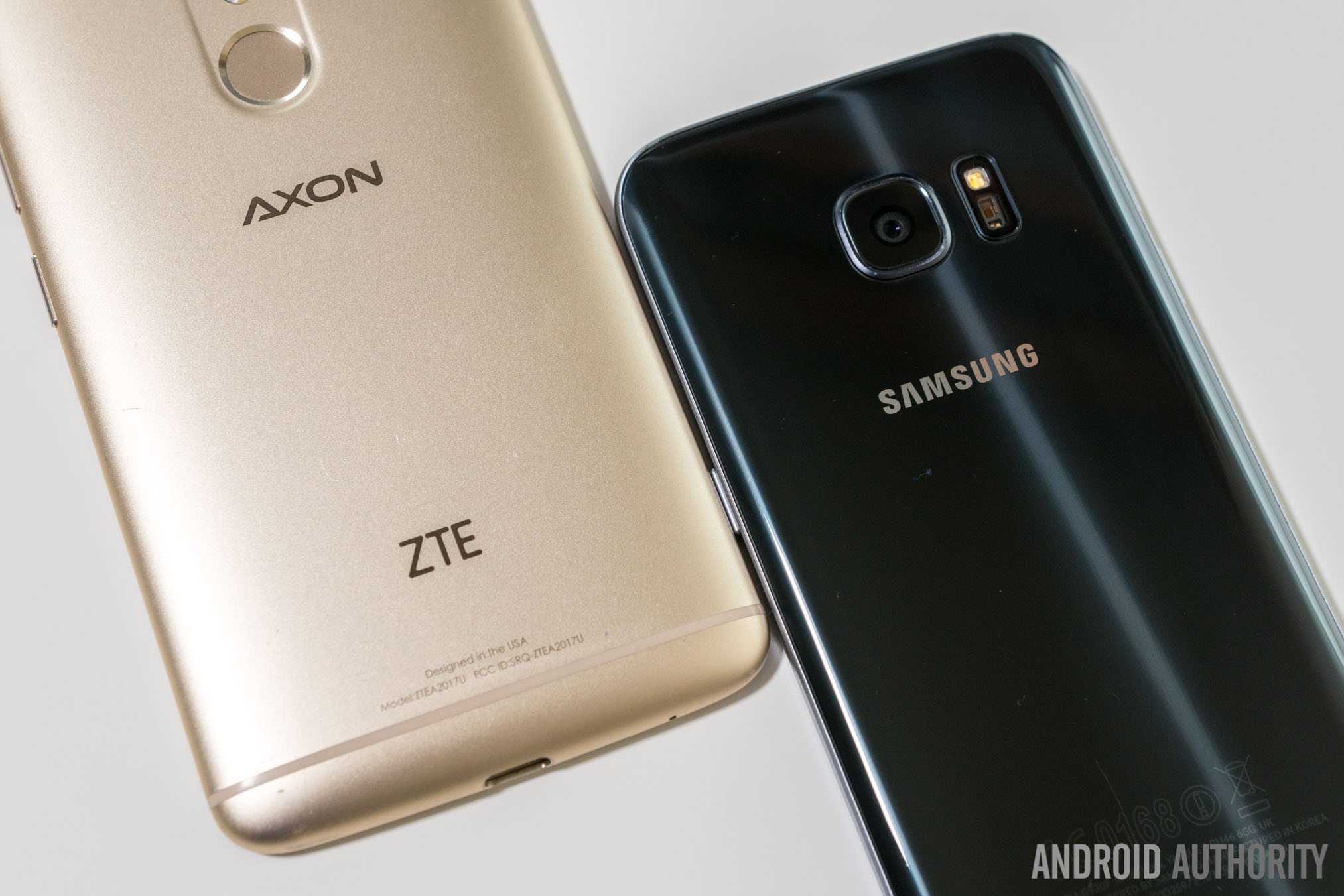
When we reviewed the Samsung Galaxy S7 earlier this year, we dubbed it as being “possibly the best smartphone ever.” That mostly remains true today; Samsung’s own Note 7 slightly eclipsed the S7, until it started exploding, forcing Samsung to kill off the product entirely.
Also check out:
Although we’ve continually found it difficult to recommend anything other than the Galaxy S7 for buyers ready to pay top dollar, this year’s rise of affordable flagships like the ZTE Axon 7 has started to blur the line between mid-range and flagship. For oftentimes two-thirds or sometimes even half the price of more expensive flagships like the Galaxy S7, you can get a surprisingly similar experience.
The underlying question remains, however, whether the price savings of affordable flagships equates to the same kind of experience or if bigger compromises must be made. So, in this comparison, we’ll focus primarily on answering that question. Let’s take a closer look with ZTE Axon 7 vs Samsung Galaxy S7!
Design
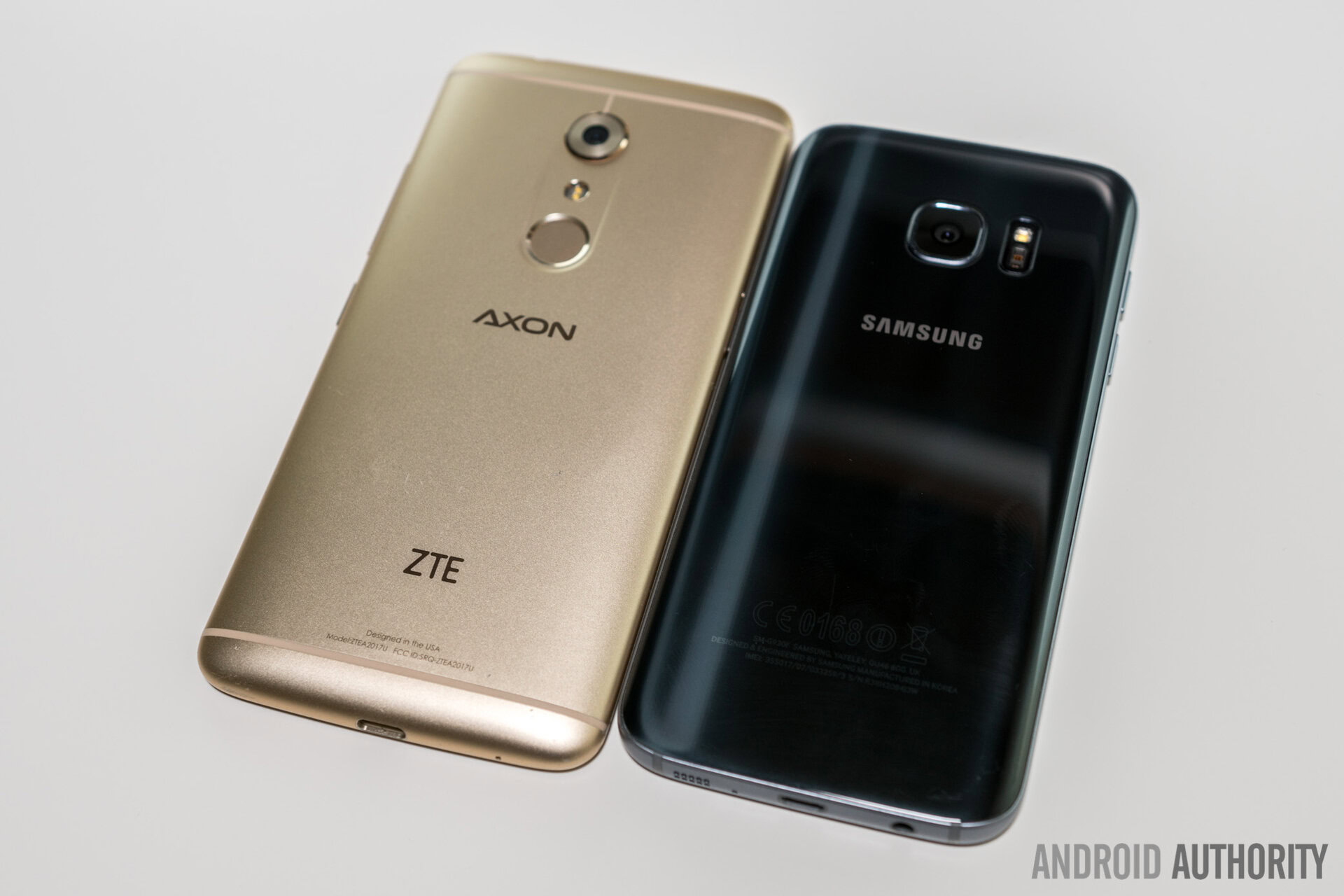
The Axon 7 and Galaxy S7 adopt remarkably different design philosophies: whereas the Axon 7 is encased in a beefy all-metal unibody, the Galaxy S7 is composed of curved glass panels held together by an aluminum band. Both phones share about the same weight and thickness, although the Galaxy S7 is considerably smaller with its 5.1″ display, compared to the Axon 7’s larger 5.5″ display. If you’re looking for a smaller Axon, you should check out the 5.2″ Axon 7 Mini. Likewise, if you’re looking for a larger Galaxy, you should take look at the 5.5″ Galaxy S7 Edge.
Both phones have unquestionably premium in-hand feels
The differences pertaining to each phone’s in-hand feel extend beyond size, however. The Axon 7 feels smooth and slippery due to its unmistakably curved all-metal rear, while the Galaxy S7’s glass feels distinct and graspable, only to be blemished by easily-collected fingerprints. Both phones have unquestionably premium in-hand feels and offer excellent build quality, however. You could argue that the Galaxy S7 looks better with its light refracting glass, although which design you like more will ultimately come down to personal preferences.
Both ZTE and Samsung have shipped their phones with capacitive keys rather than software buttons. I like how ZTE allows you to change the position of the back and recent keys, but I prefer the Galaxy S7’s keys much more. The Axon 7’s were literally a last-minute addition, and that’s evident from their somewhat disappointing implementation. The keys are placed too close together on bezel that is simply too thin, and, no, they are not illuminated. While I eventually got used to the Axon 7’s keys after using it for some time, the Galaxy S7’s keys are objectively superior: illuminated and properly spaced.
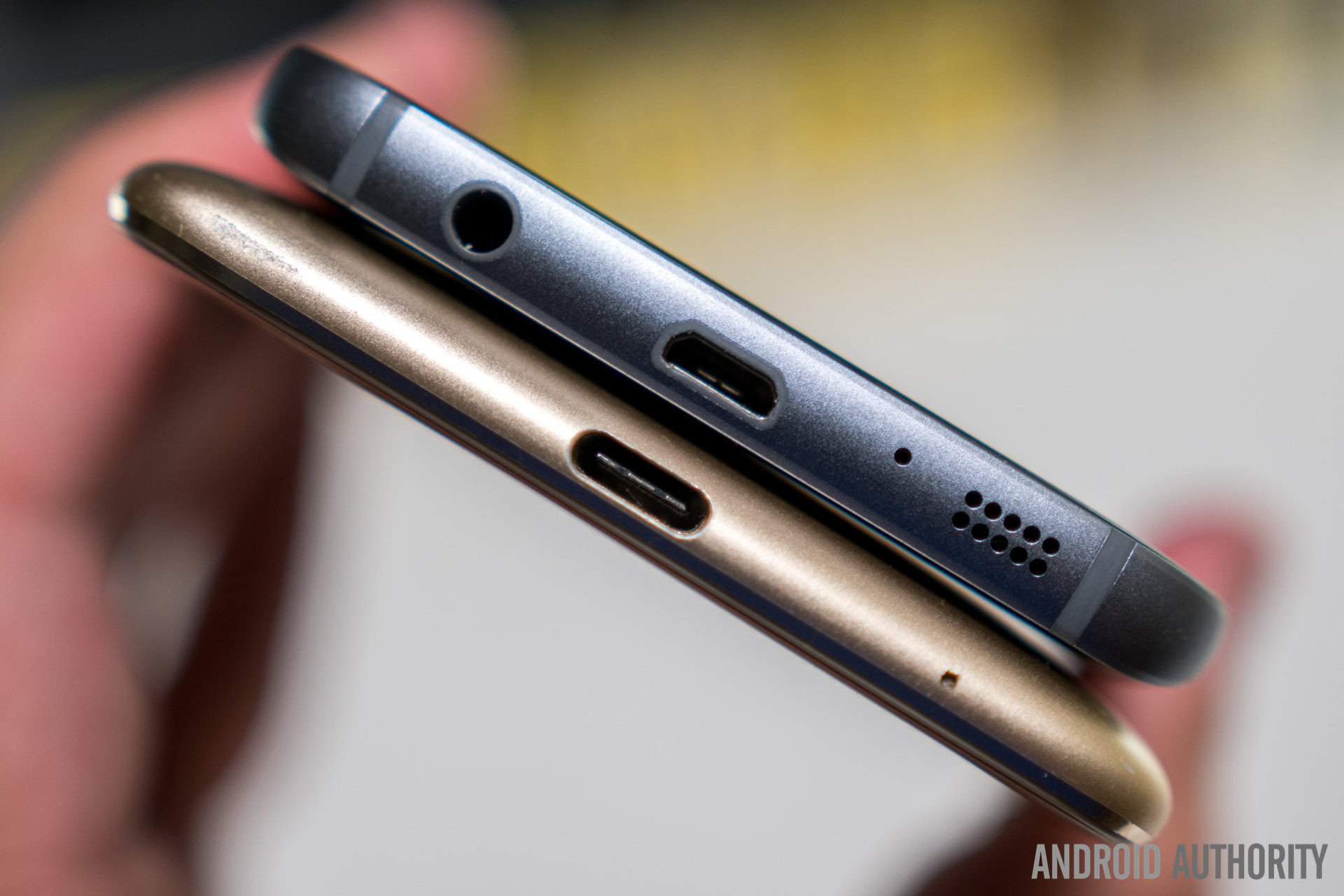
Both of these phones have headphone jacks, so you won’t have to worry about any adapter nonsense, although the charging ports are different. Whereas Samsung has stuck with the older microUSB standard, ZTE went with the new reversible USB Type-C standard. This is a pretty minor difference all things considered, but the Galaxy S7 may seem more appealing if you aren’t keen on replacing your microUSB chargers, or vice versa.
If you’re looking for a case to add to your phone, you’ll find that there’s a much better selection available for the Galaxy S7, thanks to its popularity. While ZTE does include a clear silicone case in the box with the Axon 7, you may be disappointed when shopping for third party options. This is a pretty minor aspect for many, but it’s worth pondering nonetheless.
The Galaxy S7 also has a slightly more relevant advantage: its water resistance. Samsung states that the Galaxy S7 is IP68 rated, so it should be able to handle being submerged in 1 meter of water for up to thirty minutes. We wouldn’t recommend going swimming with the S7, but if you happen to drop it in a sink full of water, you’ll be absolutely fine. It’s also quite impressive how Samsung was able to implement this feature without adding any flaps or gaskets to the various ports.
Water resistance is expensive to implement
Display
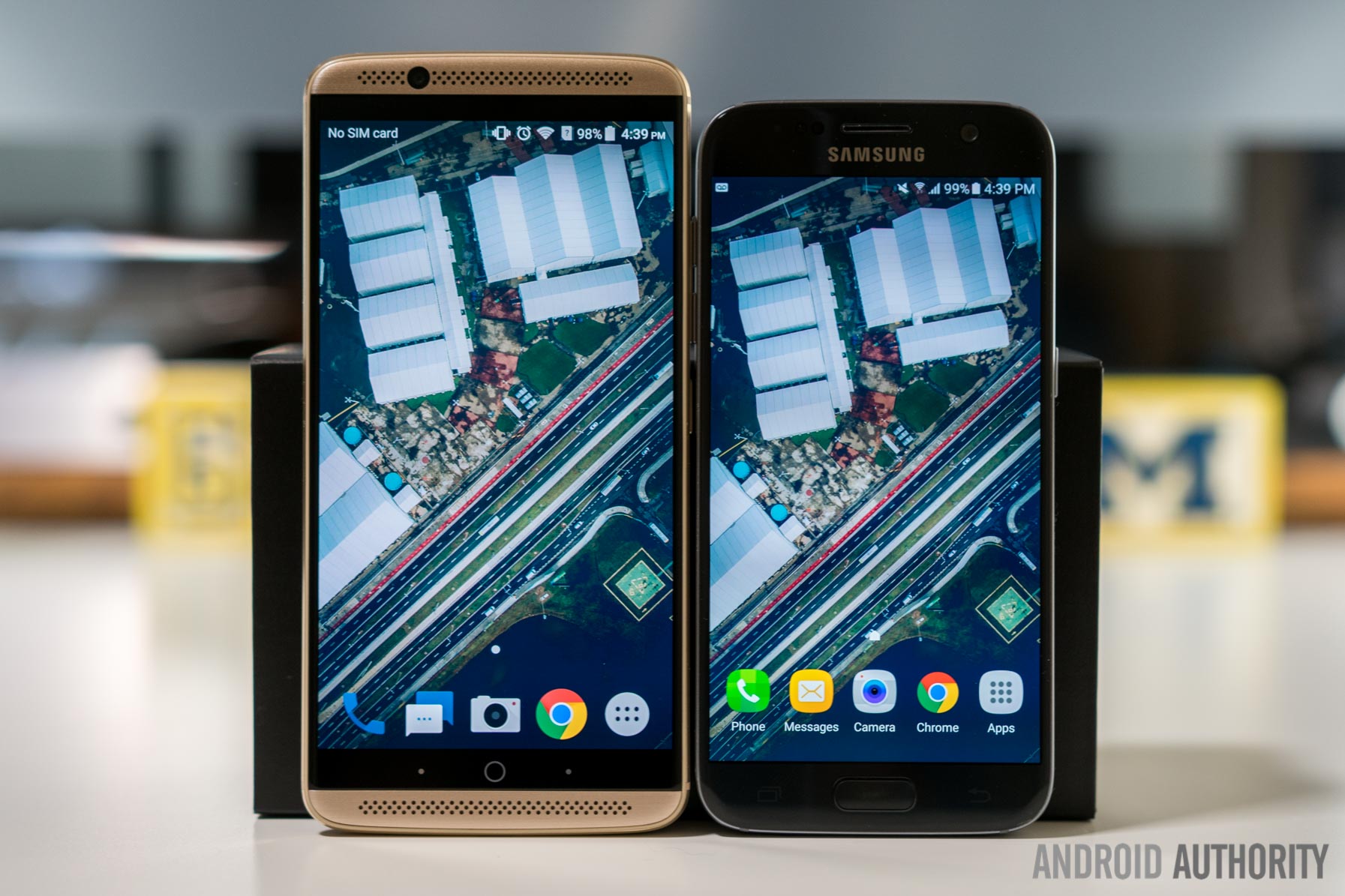
Both the Axon 7 and Galaxy S7 are utilizing Quad HD Samsung AMOLED panels. The Galaxy S7’s display is noticeably more saturated, however the Axon 7’s colors are still quite punchy. I personally prefer the saturated, but not overly saturated colors of the Axon 7, but to be frank, the difference isn’t very noticeable unless you compare the two side-by-side. The difference in pixel densities is also negligible. Some say quad HD is overkill at 5.5″, so there’s no reason to believe that quad HD at a smaller size would be noticeably superior.
The Axon 7's display is bright enough for most cloudy Michigan days
Other than that, there’s not much different regarding the displays. Both are coated in Corning Gorilla Glass 4 and both are satisfyingly curved to meet with side housings.
Performance

Powered by the same Qualcomm Snapdragon 820, Adreno 530, and 4 GB of RAM, both the Axon 7 and Galaxy S7 offer remarkably similar performance. That is to say, each phone offers some of the best performance currently available, and neither phone should have trouble keeping up with day-to-day tasks.
ZTE Axon 7 benchmark results:
Samsung Galaxy S7 benchmark results:
While some international models of the Galaxy S7 ship with one of Samsung’s own Exynos 8890 processors, as a simplification, our comparison is focused on the US-models. It is worth noting, however, that the Exynos 8890 offers nearly the same CPU performance and slightly worse GPU performance than the Snapdragon 820, meaning that if you’re a heavy mobile gamer, you may want to shy away from this chipset.
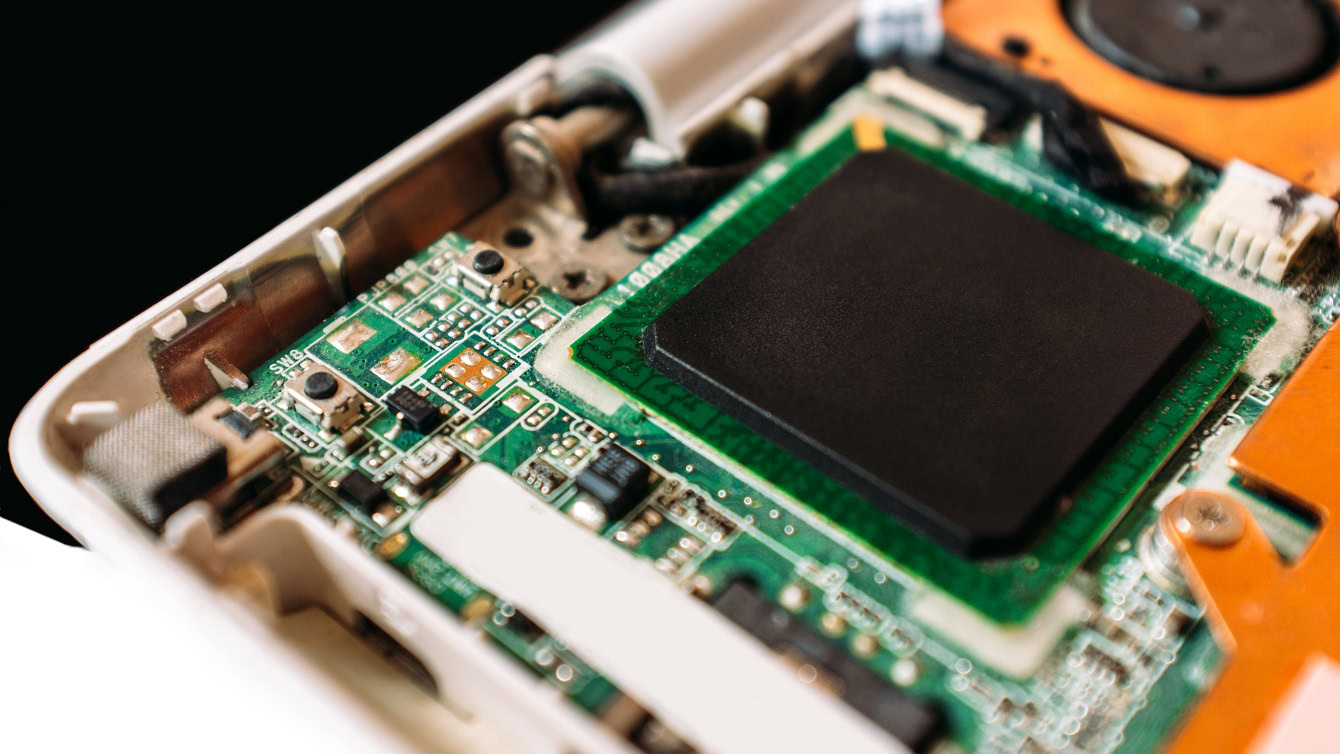
It’s quite impressive that ZTE managed to bring such great performance at a mid-range price, as many other manufacturers often skimp on the processor by either choosing a mid-range chip from the Snapdragon 600 series, an older high-end chip like the Snapdragon 808, or even a low-end MediaTek processor.
Hardware
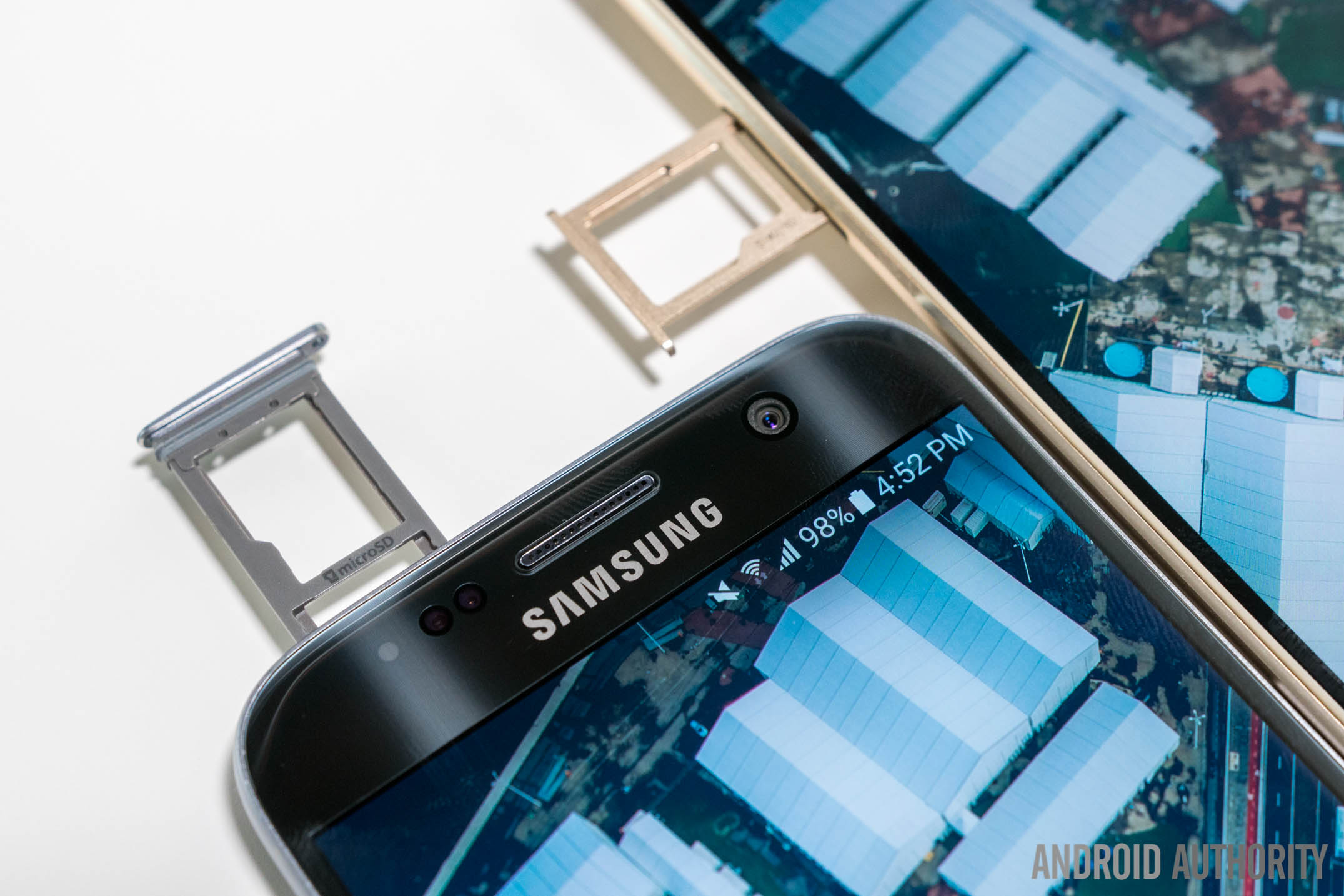
In living up to its affordable flagship status, the Axon 7 features the exact same connectivity options as the Galaxy S7: 802.11ac, Bluetooth 4.2, and NFC. It also has a slight advantage, at least in the US, by offering dual SIM cards. As many of our US-based readers will know, unlocked dual-SIM smartphones are still sort of a rarity here.
While Axon 7 does include support for CDMA networks, there have been mixed reports as to how well it works with Verizon and Sprint. If you’re on either of these networks, the Galaxy S7 is a better choice because of its official support on these networks. However, if you’re on AT&T, T-Mobile, or any of their respective MVNOs, you won’t notice a difference in network support.
If you want the same 64 GB with the Galaxy S7, you'll have to pay more
While the Galaxy S7 offers microSD card expansion with a separate slot on single-SIM models, up to 256 GB, the Axon 7 is limited to a 128 GB card, placed in the second SIM card slot. With that said, the Axon 7 base model includes double the onboard storage as the base 32 GB in the Galaxy S7. If you want the same 64 GB with the Galaxy S7, you’ll have to pay more.
The Axon 7 features a recessed rear-facing fingerprint reader, which is both fast and accurate. The Galaxy S7’s reader is embedded within its home button, and also performs quite well. Despite some occasional misreads, the Axon 7’s reader does seem superior as it unlocks considerably faster.
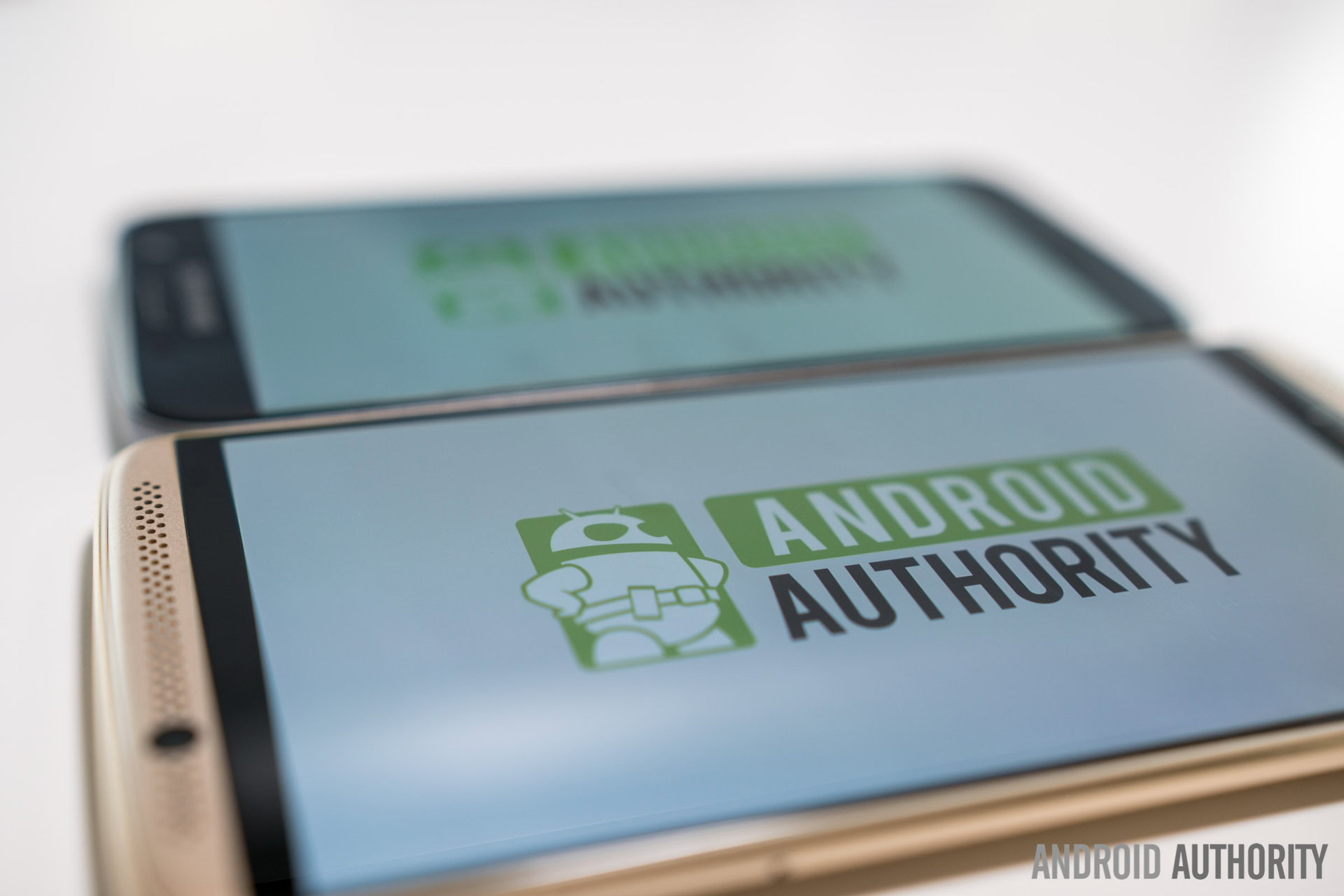
The Axon 7’s dual stereo front-facing speaker setup is a clear winner compared to the Galaxy S7’s distorted-sounding side-firing speaker. The difference is very noticeable, and if you care about external audio, you will absolutely love the volume, clarity, and immersion of the Axon 7’s speakers.
The Axon 7’s dual stereo front-facing speaker setup is a clear winner compared to the Galaxy S7’s distorted-sounding side-firing speaker.
For output through headphones, it’s more difficult to say the Axon 7 is better. ZTE has heavily marketed the phone for having dual independent Hi-Fi audio chips for listening and recording, but, when compared to the Galaxy S7, I couldn’t notice a difference like I could with other phones. It’s not the Axon 7’s Hi-Fi chips are a sham, but rather that Samsung also seems to have used high quality chips for the Galaxy S7.
Battery Life
Representative battery life test results (first two: ZTE Axon 7, last two: Galaxy S7):
For fast charging, the Axon 7 includes Qualcomm Quick Charge 3.0 for a 50% charge in thirty minutes, whereas the Galaxy S7 includes Quick Charge 2.0 for a 60% charge in thirty minutes. One advantage that the Galaxy S7 does have, however, is its compatibility with Qi and PMA wireless charging. This isn’t exactly widespread, but if it’s on your list of must-haves, the Galaxy S7 may be the best choice.
Camera
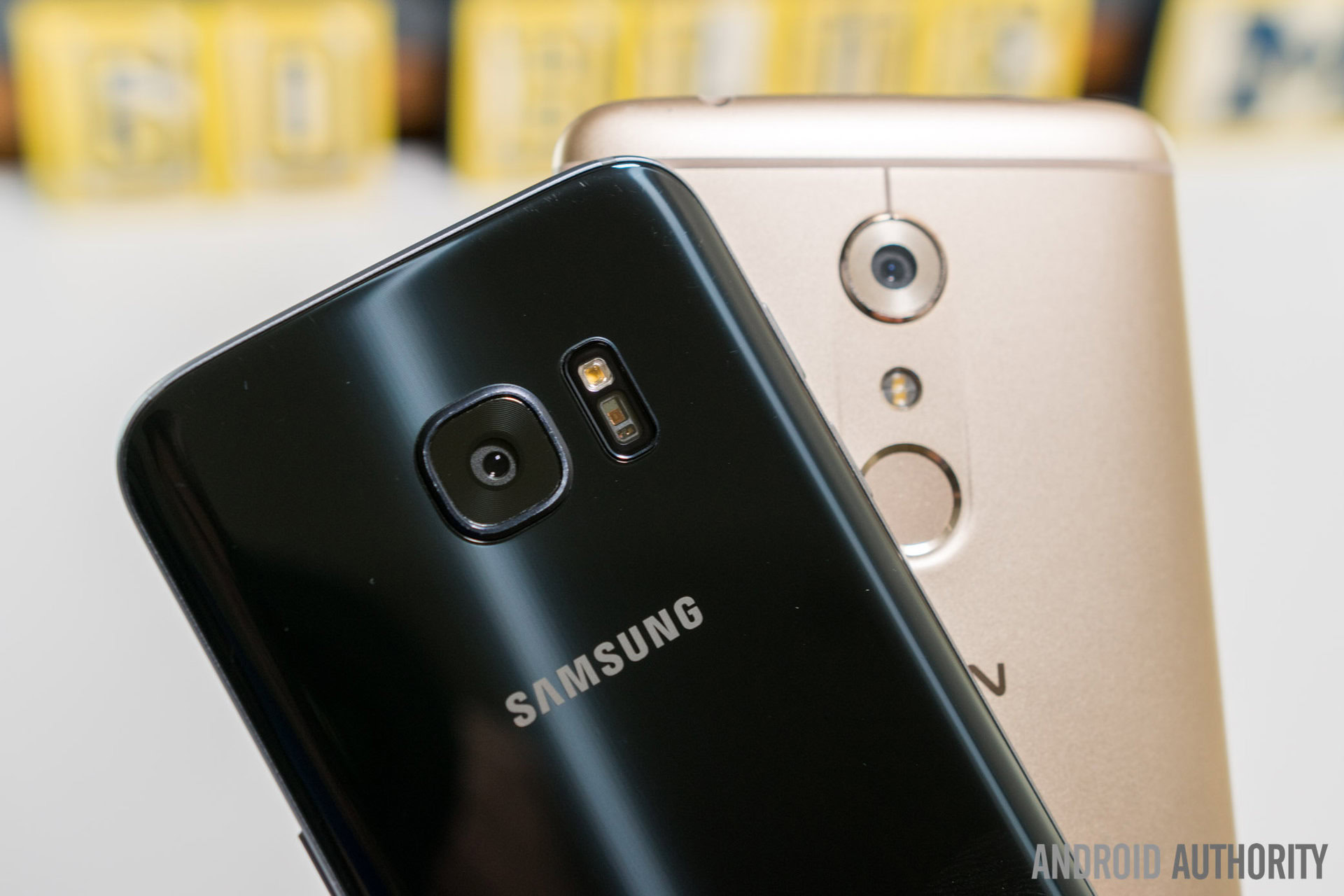
For rear cameras, the Axon 7 features a 20 MP f/1.8 shooter and the Galaxy S7 features a 12 MP f/1.7 shooter. Both include optical image stabilization. You may be wondering why the Galaxy S7 is a bit short on megapixels; essentially, Samsung has opted for larger pixels rather than more pixels. We’ve seen other manufacturers do this in the past, and the reasoning is that larger pixels means more light per pixel, which theoretically translates to better photos, especially in low-light.
We’ve thought of the Galaxy S7’s camera as the benchmark for smartphone cameras for a while now, so it should come as no surprise that it edges out the Axon 7’s camera in daylight conditions.
While the Axon 7 is certainly capable of producing some impressive shots and oftentimes isn’t too far off from the Galaxy S7, its tendency to warmer color temperatures and occasional trouble with bright colors can be very distracting.
The dynamic range is also a bit better on the Galaxy S7, seen in how well the shadows are brought up with little loss of detail in the highlights. The Axon 7’s dynamic range isn’t bad, but it does tend to have trouble balancing out extremes.
Interestingly, images taken with the Axon 7 are often sharper than those taken with the Galaxy S7, because of the higher megapixel count. This can be very helpful when wanting to crop in, as you can do so without losing too much detail.
In low-light conditions, the Galaxy S7 is a clear winner. Although light is sometimes reflected across its lens, the Galaxy S7 provided far brighter, less noisy, and more detailed shots than the Axon 7.
This shouldn’t be much of a surprise, either. We’ve considered the Galaxy S7 to be the best for low-light photography for some time now as well, and noted the Axon 7’s poor low-light performance in our comprehensive review.
With that said, this is probably the area where you’ll be compromising the most when going with the Axon 7.
Both phones are capable of recording video in 4K at 30p. While the Axon 7 does a reasonably good job, the Galaxy S7 once again edges it out with better colors and more gradual exposure changes. The Galaxy S7 also provides more manual control when taking video. To see a side by side comparison for yourself, check out our video at the very top of this page.
ZTE Axon 7 Camera Samples
Samsung Galaxy S7 Camera Samples
Overall, the Galaxy S7’s camera is better than the Axon 7’s, especially in low-light conditions and during video. For camera apps, the Galaxy S7’s does feel more polished, although the Axon 7’s is very easy to use as well.
Software

Both the Axon 7 and Galaxy S7 ship with Android 6.0 Marshmallow, but each phone includes a number of extra features and UI tweaks. Whereas the Axon 7 runs ZTE’s relatively young MiFavor UI 4.0, the Galaxy S7 features a well-refined version of TouchWiz. Thankfully, neither experience is overly jarring; for example, both keep the app drawer, stay relatively close to stock Android in terms of design, and overall aren’t too iOS-like.
I found myself enjoying the Galaxy S7's software more than the Axon 7's
With that said, I found myself enjoying the Galaxy S7’s software more than the Axon 7’s. It’s not the Axon 7 doesn’t implement useful features and clever changes, but rather that it lacks the polish and refinement of well-evolved skins like TouchWiz. To ZTE’s credit, MiFavor has improved since launch, but there are still areas which could quite frankly use an overhaul.
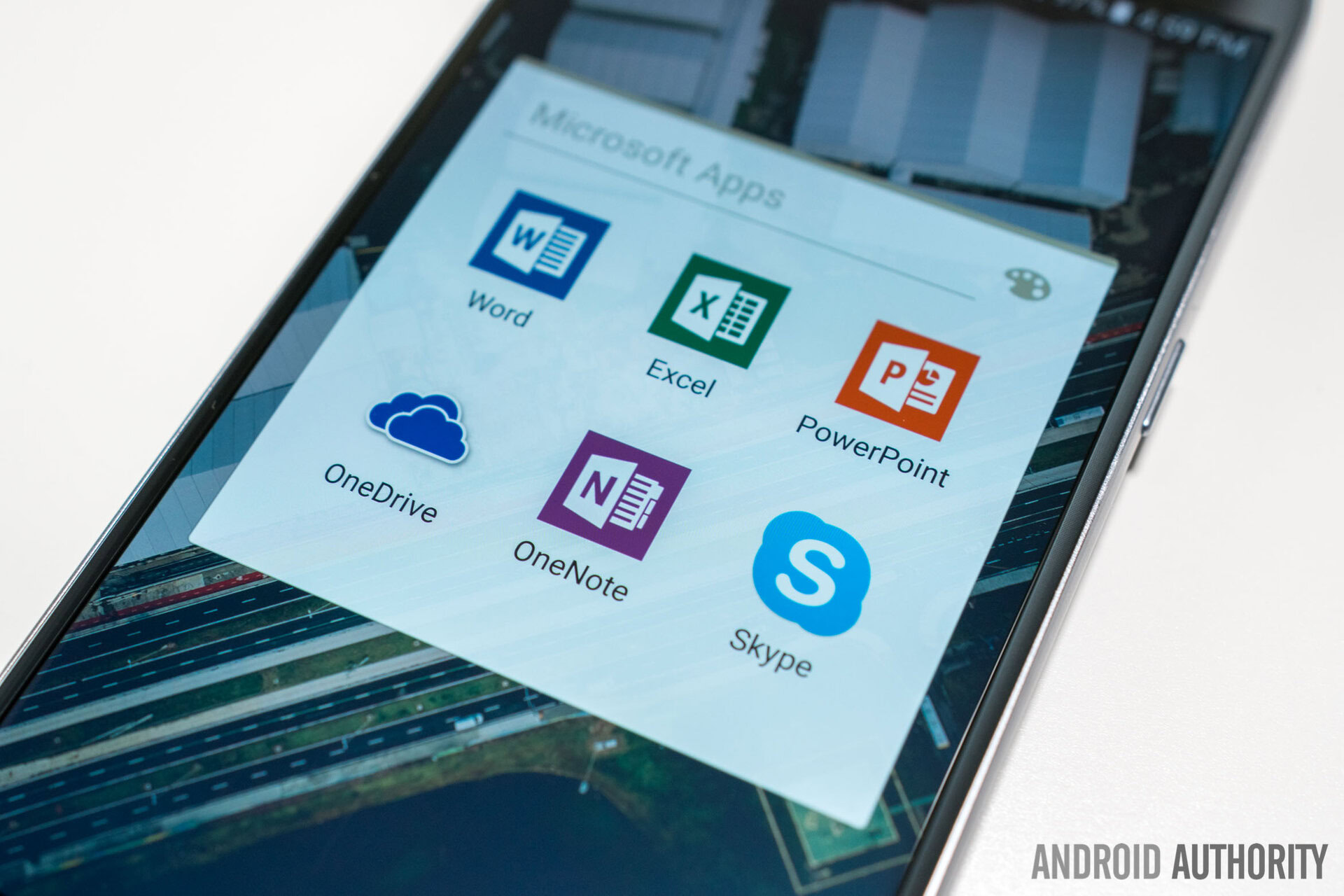
It’s not all bad for ZTE in software, though. The Axon 7 not only ships with far less bloatware than the Galaxy S7, but also almost always offers an uninstall option. The same can’t be said about the Galaxy S7, which serves up plenty of bloatware which can’t be uninstalled, especially if you purchase a carrier branded model.
Overall, however, TouchWiz is older, more polished, and offers a better experience. With genuinely useful and clever features like Game Tools and the Samsung Pay, TouchWiz is pleasant to use. It’s not that MiFavor isn’t, but that its annoyances detract from its appeal. Annoyances like needing to tap a notification bell before viewing notifications every time you view the lock screen are simply inexcusable, even at the Axon 7’s price.
There is some good news for both phones. Based on what we’ve seen historically, both the Axon 7 and Galaxy S7 should receive an Android 7.0 Nougat update within the next six months or so. Each manufacturer has been responsive in addressing software bugs through OTA updates, too.
Gallery
Pricing and availability
You can purchase the ZTE Axon 7 in either gray or gold, unlocked and dual-SIM for $400. The Samsung Galaxy S7 is available in black, white, or gold for around $670 to $700, depending on your carrier. Obviously, that’s a significant difference in pricing, so you’ll want to carefully consider our conclusion below to make the best choice for you.
ZTE goes the extra mile by offering a two-year premium warranty
Conclusion
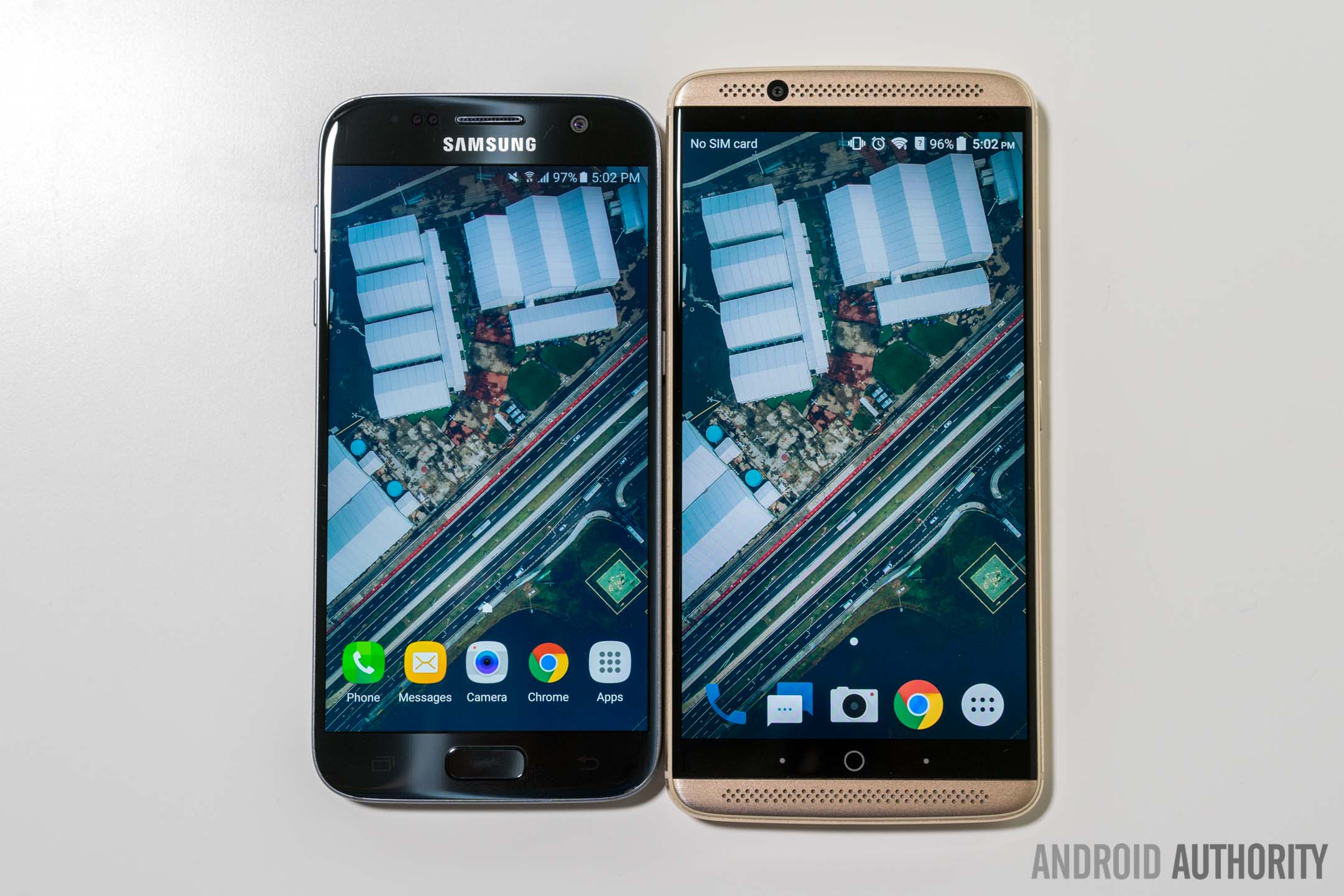
All things considered, it’s quite impressive just how close the ZTE Axon 7 comes to the Samsung Galaxy S7. The Axon 7 may just be the best alternative option we’ve had to date, and if you’re on a tight budget, it’s difficult to justify spending much more on the Galaxy S7 for diminishing returns.
However, the answer to which you should choose is a bit more complicated when you’re merely trying to save money. Although the Axon 7 provides the better value with fairly similar hardware, slightly better battery life, and great front-facing speakers, you may find the Galaxy S7’s water resistance, more sunlight-readable display, better camera, and more polished experience to be worth the $300 price difference.
Also check out:
Hopefully we’ve made your decision at least a little bit easier. We’d love to hear your thoughts on these two smartphones and whether you think the Galaxy S7 is truly worth the higher price. Feel free to let us know in the comment section below.